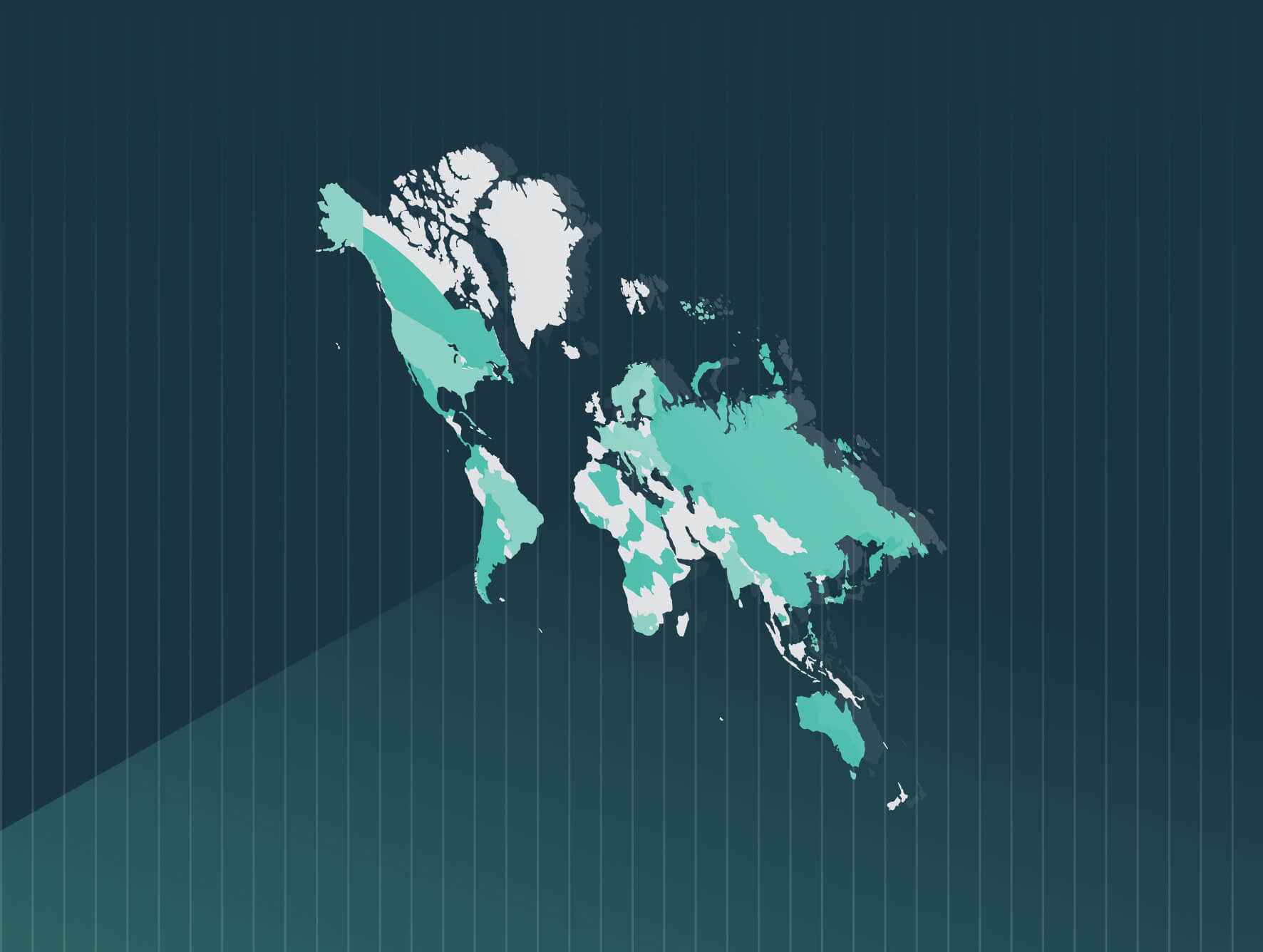The EU Pay Transparency Directive, which was approved in June 2023, was developed to close the 12.7% gender pay gap across the European Union. The Directive establishes a clear framework for EU member states to apply the principle of equal pay for equal work or work of equal value.
EU member states have until June 2026 to transpose the Directive’s requirements into law. In response, Trusaic will be monitoring the status of each country’s transposition efforts and updating when there’s actionable development for which we can provide guidance for affected employers.
Applicable employers – those with 150 or more employees – must submit gender pay gap reports June 6, 2027. Applicability is likely to vary by member state, as the requirements put forth by the Directive are minimum thresholds. Thus, countries can elect to expand the scope of employer size that must adhere to the reporting requirements.
For further details on the in-depth requirements outlined by the EU Directive, access our comprehensive guide.
| Member State | Status | Draft Legislation | Final Legislation | Effective Date | Guide | Blog |
|---|---|---|---|---|---|---|
| Austria | Announcement Pending | No | No | TBD | Austria Guide | Austria Blog |
| Belgium | On Sept. 12, 2024, Le Parlement de la Communauté Française (Fédération Wallonie-Bruxelles) transposed the EU Pay Transparency Directive. The law only applies to employers subject to the jurisdiction of the Fédération Wallonie-Bruxelles (French Community of Belgium). Access our webinar for more details. | Yes (for employers subject to the jurisdiction of Fédération Wallonie-Bruxelles) | Yes (for employers subject to the jurisdiction of Fédération Wallonie-Bruxelles) | 2026 | Belgium Guide | Belgium Blog |
| Croatia | Announcement Pending | No | No | TBD | Croatia Guide | Coming Soon |
| Cyprus | Announcement Pending | No | No | TBD | Cyprus Guide | Coming Soon |
| Czech Republic | Announcement Pending | No | No | TBD | Czech Republic Guide | Coming Soon |
| Denmark | Announcement Pending | No | No | TBD | Denmark Guide | Denmark Blog |
| Estonia | Announcement Pending | No | No | TBD | Coming Soon | Coming Soon |
| Finland | On May 16, 2025, the Finnish government published its draft legislation to implement the EU Pay Transparency Directive. Access the draft bill for more details. | Yes | No | TBD | Finland Guide | Finland Blog |
| France | France officials have announced they are in the process of overhauling its existing Gender Equality Index to align with the EU Pay Transparency Directive. An official draft is expected in Q3 2025. | Pending | No | TBD | France Guide | France Blog |
| Germany | German officials have indicated they will release a first draft of legislation sometime in Q3 of 2025. | Pending | No | TBD | Germany Guide | Germany Blog |
| Greece | Announcement Pending | No | No | TBD | Greece Guide | Greece Blog |
| Hungary | Announcement Pending | No | No | TBD | Coming Soon | Coming Soon |
| Ireland | Ireland published its draft bill implementing the pay transparency provisions of the EU Pay Transparency Directive on Jan. 15, 2025. Access the draft bill and our webinar for more details | Yes | No | TBD | Ireland Guide | Ireland Blog |
| Italy | Announcement Pending | No | No | TBD | Italy Guide | Italy Blog |
| Latvia | Announcement Pending | No | No | TBD | Coming Soon | Latvia Blog |
| Lithuania | On May 27, 2025, draft proposals for transposing the EU Pay Transparency Directive were officially presented to the Tripartite Council of Lithuania’s Ministry of Social Security. Access official details of the proposals through the Tripartite Council meeting notes. | Yes | No | TBD | Lithuania Guide | Lithuania Blog |
| Luxembourg | Announcement Pending | No | No | TBD | Coming Soon | Luxembourg Blog |
| Malta | Malta published Legal Notice 112 of 2025 on June 27, 2025, which introduces amendments that align with the pay transparency elements of the EU Pay Transparency Directive. An official transposition is expected by Aug. 27, 2025. | Yes | No | TBD | Coming Soon | Malta Blog |
| Netherlands | On March 27, 2025, Netherlands published its draft bill to implement the pay transparency provisions of the EU Pay Transparency Directive. Access our webinar for more details. | Yes | No | TBD | Netherlands Guide | Netherlands Blog |
| Poland | On June 4, 2025, Poland’s Parliament passed its reworked Act amending the Labour Code, which is focused on the pay transparency provisions of the EU Pay Transparency Directive. See the official timeline and draft of the legislation, and access our webinar for more details. | Yes | Yes (pay transparency elements) | December 2025 | Poland Guide | Poland Blog |
| Portugal | Announcement Pending | No | No | TBD | Portugal Guide | Portugal Blog |
| Romania | Announcement Pending | No | No | TBD | Coming Soon | Coming Soon |
| Slovakia | Announcement Pending | No | No | TBD | Coming Soon | Coming Soon |
| Slovenia | Announcement Pending | No | No | TBD | Coming Soon | Coming Soon |
| Spain | Spain is expected to release its first draft of legislation in early November. Stay tuned for more details. | No | No | TBD | Spain Guide | Spain Blog |
| Sweden | On May 29, 2024, the Swedish Ministry of Labor and Employment released the first draft of its proposed amendments to be implemented and transposed into law. Sweden was the first member state to draft its proposal for EU Directive legislation. Access our webinar for more details. | Yes | No | TBD | Sweden Guide | Sweden Blog |
As is the case with all pay transparency and pay data reporting legislation, the goal is to push organizations toward pay and workplace equity. This is an arduous and ongoing process that requires support, so the initial goal for many employers is simply compliance with the laws.
However, leading employers are pushing toward creating truly equitable companies that have embedded a cohesive fair pay strategy in their compensation philosophy that is consistently applied throughout their global employee base.
The EU Directive should be the impetus behind enhancing your existing global pay equity strategy or the inflection point in spearheading your first one.
Among the considerations you should have when developing your strategy are:
- Adopting a centralized approach. This will drive efficiency rather than relying on local management, which is especially useful in complying with the EU Directive.
- Strategic pay transparency. Decide whether to comply with what is legally mandated in each jurisdiction or to have a standard framework in place that goes beyond what’s required. Every organization should determine what pay information it wants to share and who it wants to share it with.
- Timelines and communication. Creating a global pay equity strategy from scratch is a complex task that will take time to develop and implement. A realistic timeline is two years, and it will no doubt need to be refined from there. HR business partners will need to be consulted throughout and key stakeholders will need to be identified. It’s a good idea to work with an outside partner that will maintain attorney-client privilege during the process.
While the timeline for implementation and the initial reporting deadline still seems distant, the robust requirements necessitate long-term planning. Salary budget planning and other key compensation priorities remain at the forefront for compensation and total rewards teams. While those tasks are indeed significant, employers should not leave their global pay equity compliance and strategy efforts on the backburner.
Preparing to successfully comply with the EU Directive depends on it.
Trusaic’s Pay Equity Product Suite will ensure you:
- Comply with all of the EU Directive requirements by leveraging our Regulatory Pay Transparency Reporting™ solution.
- Correct any existing inequities by leveraging PayParity® to understand, explain and resolve pay disparities.
- Our Remediation Optimization Spend Agent (R.O.S.A.™) works as PayParity’s AI remediation partner to lower your pay gap below 5% while maximizing the ROI of your remediation budget.
- Communicate narratives to employees and key stakeholders with confidence by leveraging our TrueTransparency™ solution. You can also share pay ranges with confidence by leveraging our Salary Range Finder® solution.








